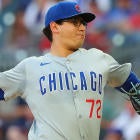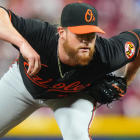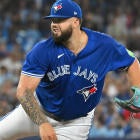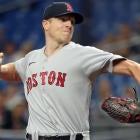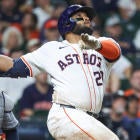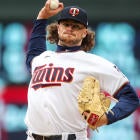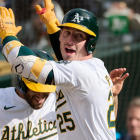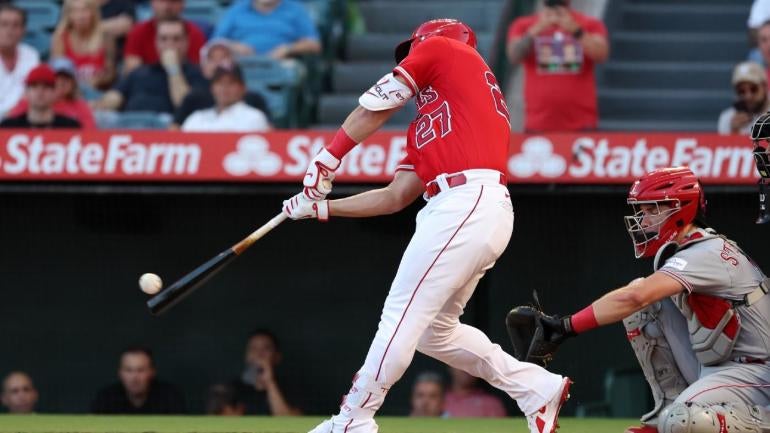
Fantasy Baseball analysts will spend most of April telling you not to overreact to what you're seeing in the early going of the season. Just last week, I wrote an article saying exactly that, pointing out that April stats don't necessarily mean very much, and to not overreact to slow starts for guys like Aaron Judge and Francisco Lindor.
And, wouldn't you know it, Judge has three homers and seven RBI in six games since I wrote that piece, while Lindor has three homers in five games since. As it turns out, when it comes to well established, superstar players, a cold couple of weeks is usually just that; a cold couple of weeks. An especially hot or cold April doesn't necessarily mean anything at all.
Of course, some people take this to mean that your opinion of a player should never change in April, and that's not what we mean, either. Even established players can show different skills in small-samples that can alter how you view them, even if they shouldn't necessarily be viewed as fundamentally different just because of it. And, when it comes to less established players, you should be even more aggressive with changing your perception of them, for one simple reason: It costs a lot less if you're wrong about moving a player up in your rankings when he costs a pick outside the top 300 than if you are wrong about Aaron Judge or Francisco Lindor's slow starts.
So, with the first month of the season almost done, I'm going to spend the next few days highlighting some of the biggest rankings risers and fallers from the preseason to the end of April. We'll surely look back at at least a few of these as overreactions, but hey, that happens. But we'll start with the hitters who have moved up so far in April to see why I'm buying in at least a little more than I was before the season – and in some cases, a whole lot more than that.
Ryan Jeffers, C, Twins
Preseason: C22 – Now: C14
I'll admit, I didn't take Jeffers apparent breakout in 2023 seriously, and that might have been a big mistake. Because, while I was gobbling up as many shares of Henry Davis and Mitch Garver as I could this draft season, I may have ignored one of the catcher position's true cheat codes at my own peril. Jeffers is starting to see significant playing time at DH for the Twins, having already made nine appearances there – the same number as he had last season. So, despite having started less than half the team's games at catcher, he's 12th at the position in at-bats so far this season, and that might only keep rising – he's hit either leadoff or third in each of his past five starts entering play Monday. I don't think he can sustain a .900-plus OPS, but an .800-plus mark with a playing time edge on most of the position? Yeah, I might be underrating him at C14.
Josh Naylor, 1B, Guardians
Preseason: 1B10 – Now: 1B7
One of the reasons I liked Naylor a lot coming into the season was because, even though he wasn't a great hitter, his ability to hit the ball hard while making a bunch of contact did seem to position him well to be an RBI standout – he had 79 in just 122 games in 2022, and then a whopping 97 in 121 in 2023. His profile was not dissimilar to Jose Abreu's at his peak, where he would routinely rank among the 1B position's leaders in RBI despite ranking closer to the middle of the pack in OPS, wOBA, or other all-in-one measures of hitting value.
But what that analysis may have discounted is the possibility that Naylor would just continue to improve as a hitter into his late-20s, and that might be what we're seeing. He's hitting .283/.360/.535 so far this season, up from an .842 OPS last season, with quality-of-contact metrics to back it up, as he enters May with a career-best .394 expected wOBA. Whether he can sustain that is a different question, but with the likes of Paul Goldschmidt, Cody Bellinger, and Triston Casas all some combination of older, underperforming, or injured, Naylor's rise up the rankings is easy to justify, even if you don't buy the improved skills.
Jordan Westburg, 2B, Orioles
Preseason: 2B36 – Now: 2B15
I'll admit it, I think we all just way underrated Westburg coming into the season, and I may still be doing so. He was underwhelming as a rookie, posting a .715 OPS, but it's not like he was a disaster, and while he wasn't a huge prospect on the level of Jackson Holliday or Gunnar Henderson, he was a career .283/.366/.533 hitter with 36 homers and 15 steals in 158 games at Triple-A, and we all just decided he barely mattered – his ADP coming into the season was 306.2 in NFC leagues despite having a starting role more or less locked in for the Orioles. We dropped the ball on this one, and while his home park may hold him back from reaching his ultimate upside, it's also not unreasonable to think he could end up with 25 homers and 15 steals, given his excellent quality of contact metrics.
Elly De La Cruz, SS, Reds
Preseason: 3B5 – Now: 3B2
Three spots may not sound like much, but De La Cruz has moved ahead of Rafael Devers, Austin Riley, and Gunnar Henderson, which is pretty significant, don't you think? I don't necessarily buy that he's just the best player in Fantasy now – he got off to an unbelievably (literally) hot start last season, too – but he's making some of the changes we wanted to see, cutting his strikeout rate to a more manageable 30.7% (and it's continued to trend down), while continuing to hit the ball incredibly hard consistently. I'm interested to see what it looks like when he inevitably slumps, because how young players respond to adversity arguably tells us more about what they're made of than how they play when things are going well, but given the adjustments he has seemingly made since last season already, he has to move up.
C.J. Abrams, SS, Nationals
Preseason: SS9 – Now: SS7
The big question with Abrams was how much the bat would play up. He got to 18 homers last season, but there was a ton of skepticism around that thanks to some pretty poor underlying metrics; his barrel rate, hard-hit rate, and average exit velocity were all 35th percentile or below last season, and given his slight frame, there was a lot of doubt that even the 18 homers from last season were legitimate. Abrams is doing everything he can to quiet those doubts now.
His quality of contact metrics are dramatically improved from where they were a year ago, with his expected wOBA on contact jumping from a below-average .345 to a borderline elite .459 mark. I don't expect that to be sustainable, but Abrams is maximizing his still pretty middling raw power by aggressively pulling the ball in the air, with 25 batted balls (32% of his total) hit in the air to the pull side; he had only 77 (17.5% of his total) all last season. If you're going to maximize limited raw power, that's the way to do it, though it's not like Abrams is some Isaac Paredes clone, where that's all he can do; Abrams was a blue-chip prospect with very good bat-to-ball skills and plus athleticism.
He might just be making the leap to superstardom.
Mike Trout, OF, Angels
Preseason: OF16 – Now: OF10
Trout never lost the ability to steal bases. His sprint speed has never dropped below the 90th percentile, despite the fact that he had just six steals between 2020 and 2023 combined. He just lost the will or the motivation to steal bases, presumably in the name of trying to stay healthy. However, whether because that just didn't work or because the Angels have a new manager more invested in aggressiveness on the basepaths, he's back to running, with five steals already, and it sure looks like he's a first-round caliber player again.
Of course, the thing about ranking him is … just because he's currently healthy doesn't mean all those injury concerns that dropped him down in the rankings coming into the season have magically disappeared. He might be able to stay healthy, and if he does, he's going to provide a likely first-round return on your investment, especially when his current .226 batting average normalizes (his expected average is .277 right now). But I can't just rank him as if those injury concerns don't exist, right? It's not like Aaron Judge (my OF9 right now) doesn't have his own injury concerns, obviously, but he also has a higher demonstrated ceiling in the past five seasons than any hitter but Ronald Acuña; how can I justify ranking Trout ahead of him based on a very good month?
I can't do it, so Trout stays at 10, and it'll take a lot more than a very good month to move him much higher than that. But that still represents a heck of a jump for a veteran player.
Tyler O'Neill, OF, Red Sox
Preseason: OF42 – Now: OF32
As Scott White wrote about Monday, the fact that O'Neill has returned from the concussion IL and picked up right where he left off before the injury is an incredibly positive sign, given the way concussions can tend to derail players' seasons. I liked O'Neill as a sleeper coming into the season with his move to a much better hitting park, and it's worked out incredibly well so far. I still have some questions about his ability to stay healthy and sustain his current level of production after a couple of very disappointing showings following his 2021 breakout, but he had to move up based on his hot start.
Colton Cowser, OF, Orioles
Preseason: OF152 – Now: OF39
Part of the issue with the Orioles having so many promising young players is, it was easy for them to slip through the cracks, and that's exactly what happened here with Cowser, who was routinely falling outside of the top 400 in 15-team drafts this spring. He forced his way onto the roster with a big spring, and then forced his way into the lineup for the Orioles with a huge start to the season. Cowser has slowed down considerably, with just four hits in his past seven games, and his plate discipline is bad enough that this could be a repeat of Austin Riley's rookie season, when he got super-hot early on and then faded, hence the somewhat tepid OF39 rankings. But there's no question he's earned a significant rise up the rankings, no matter what happens from here on out.














